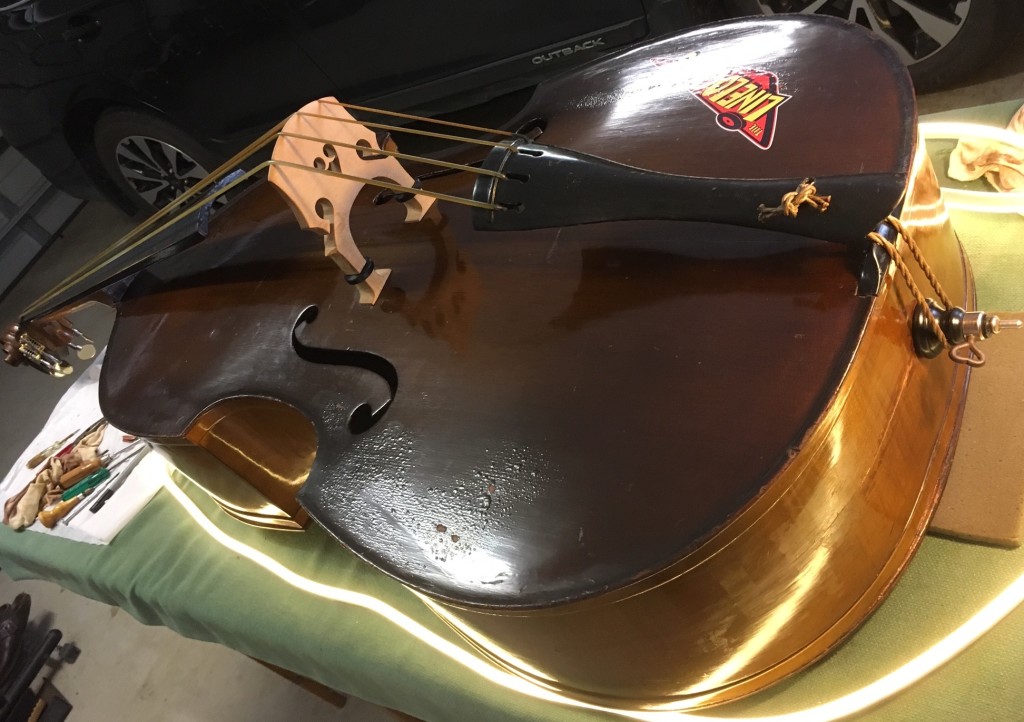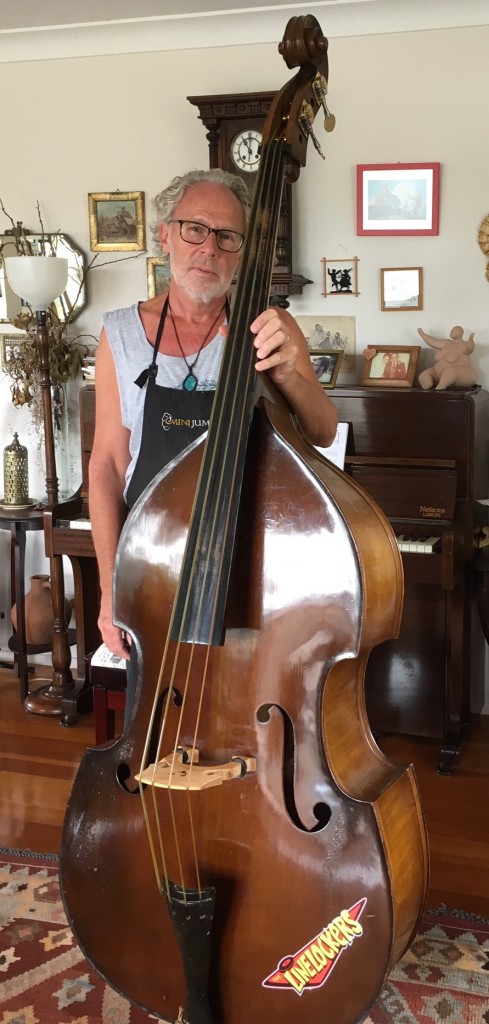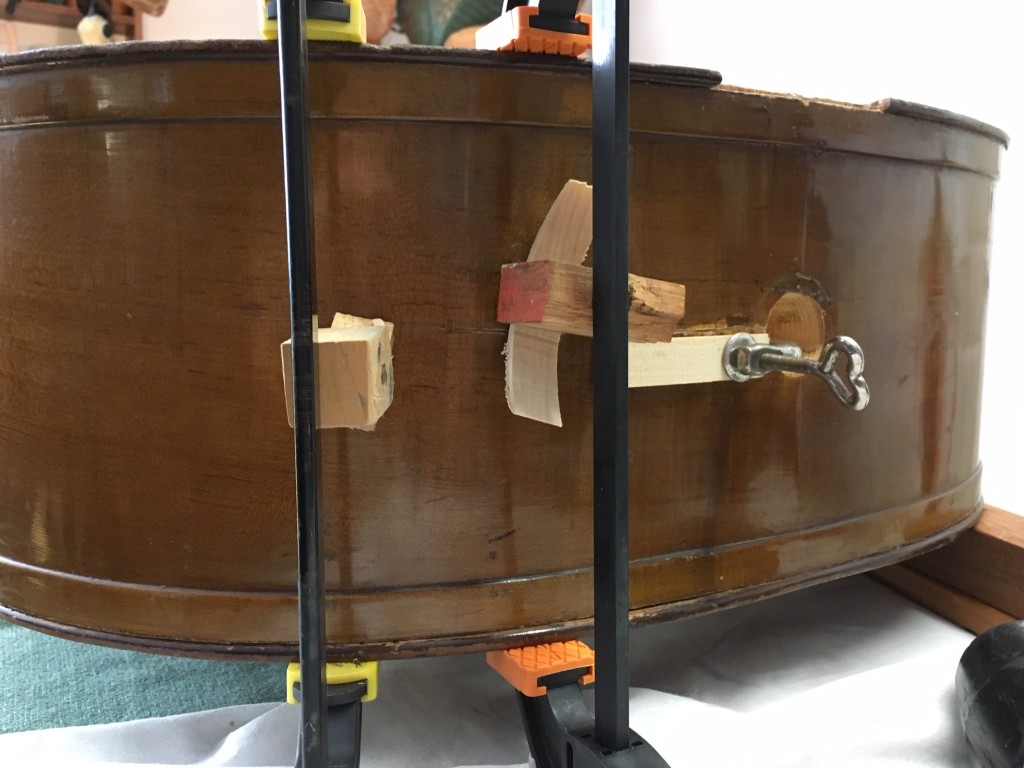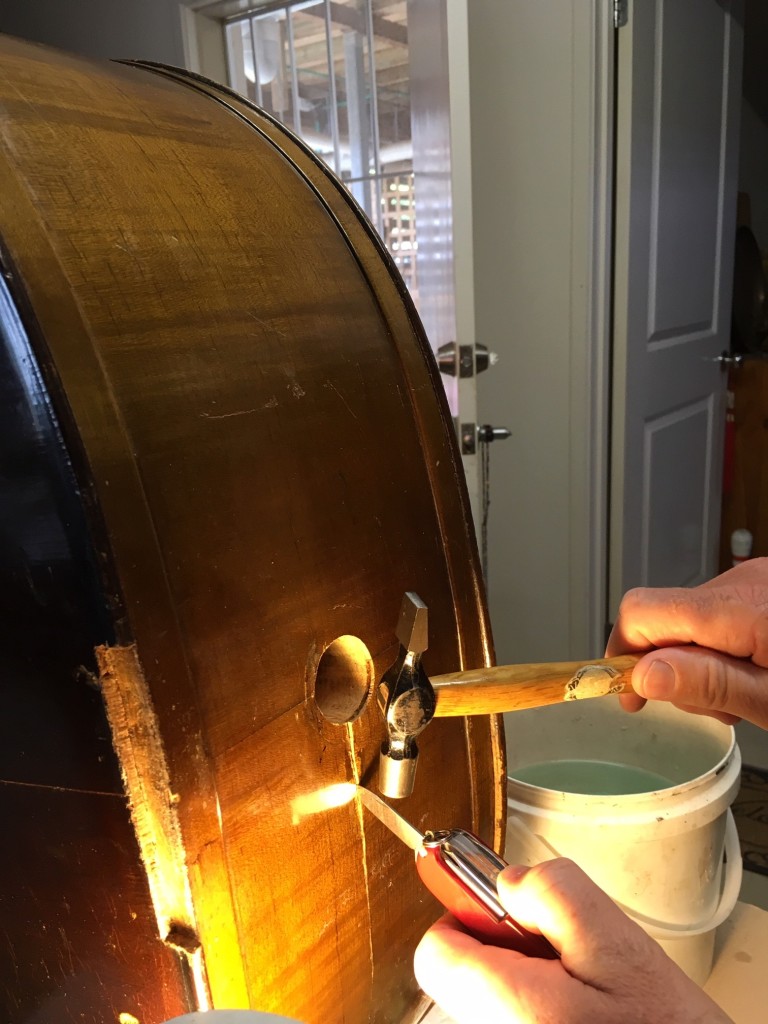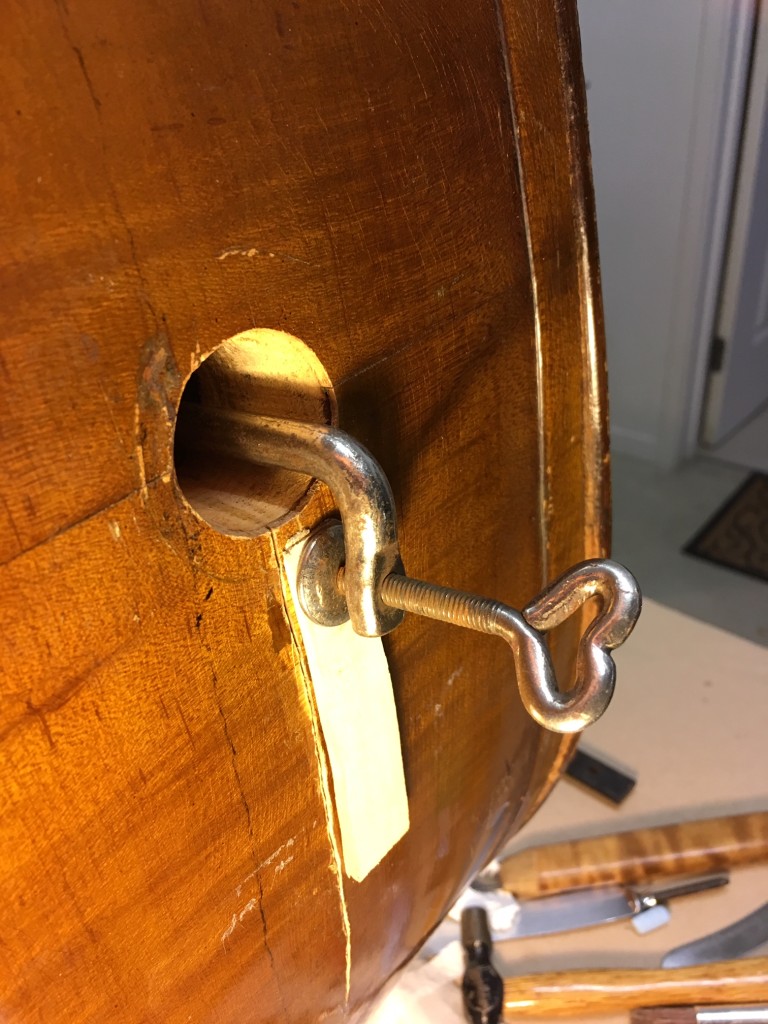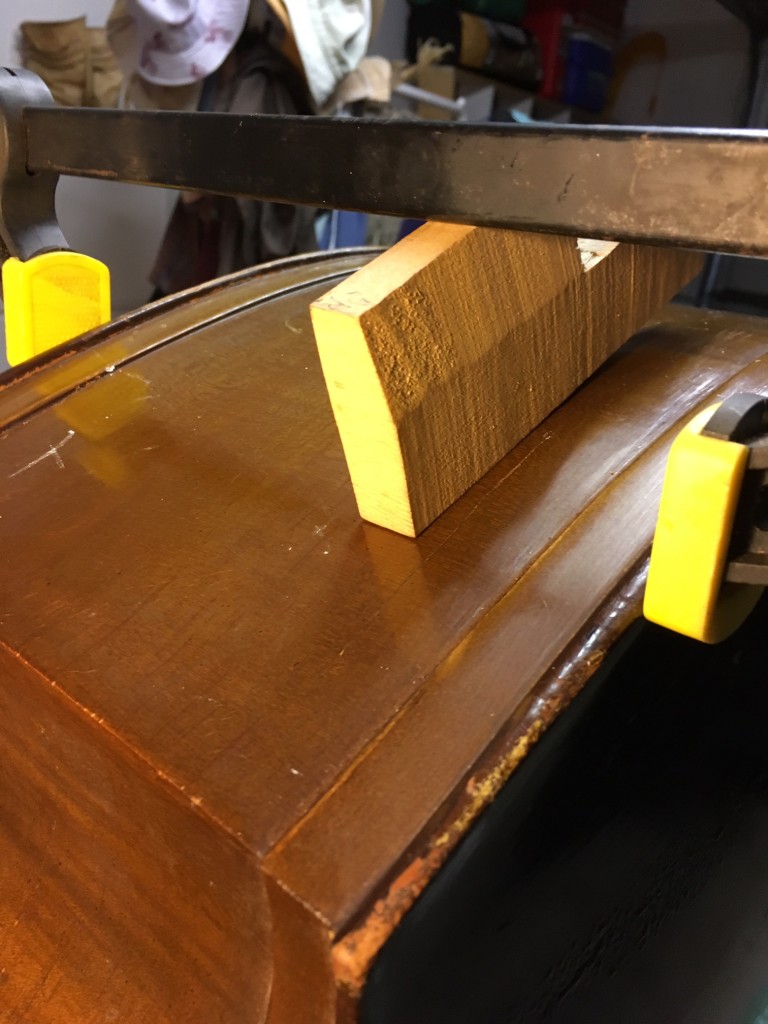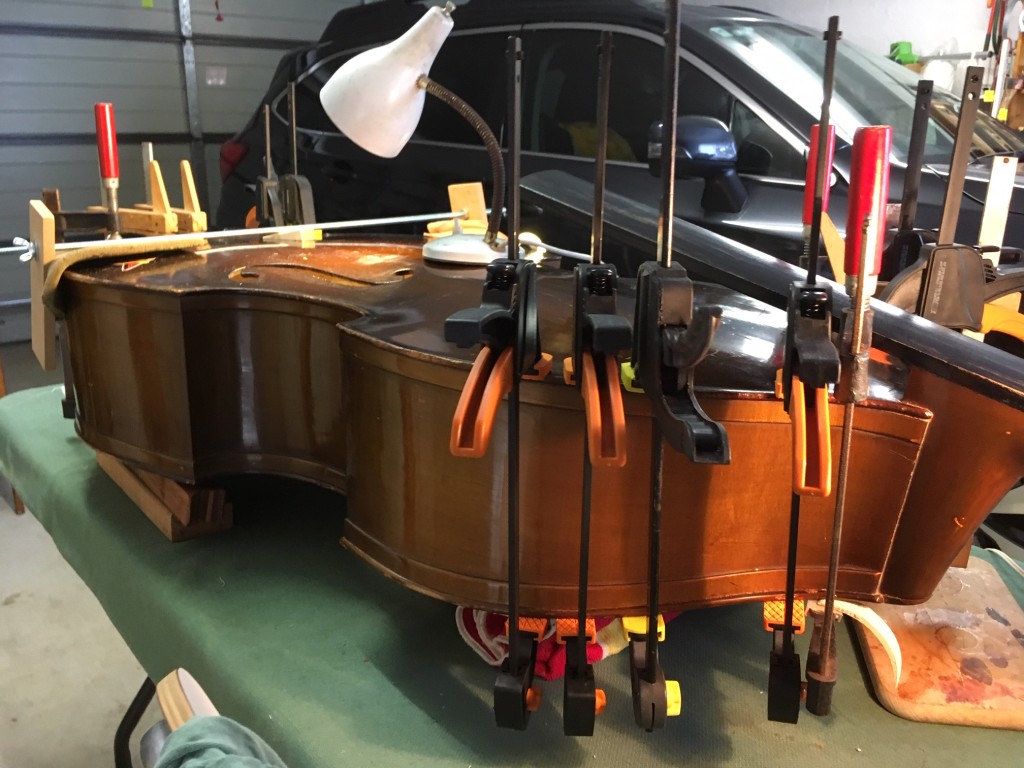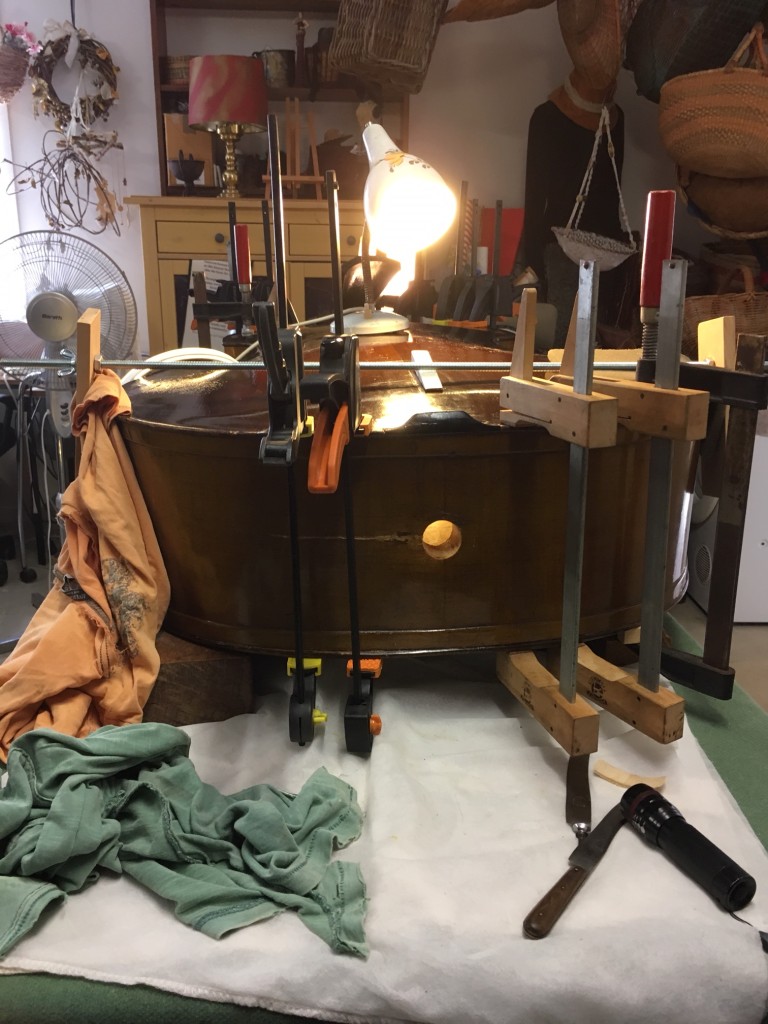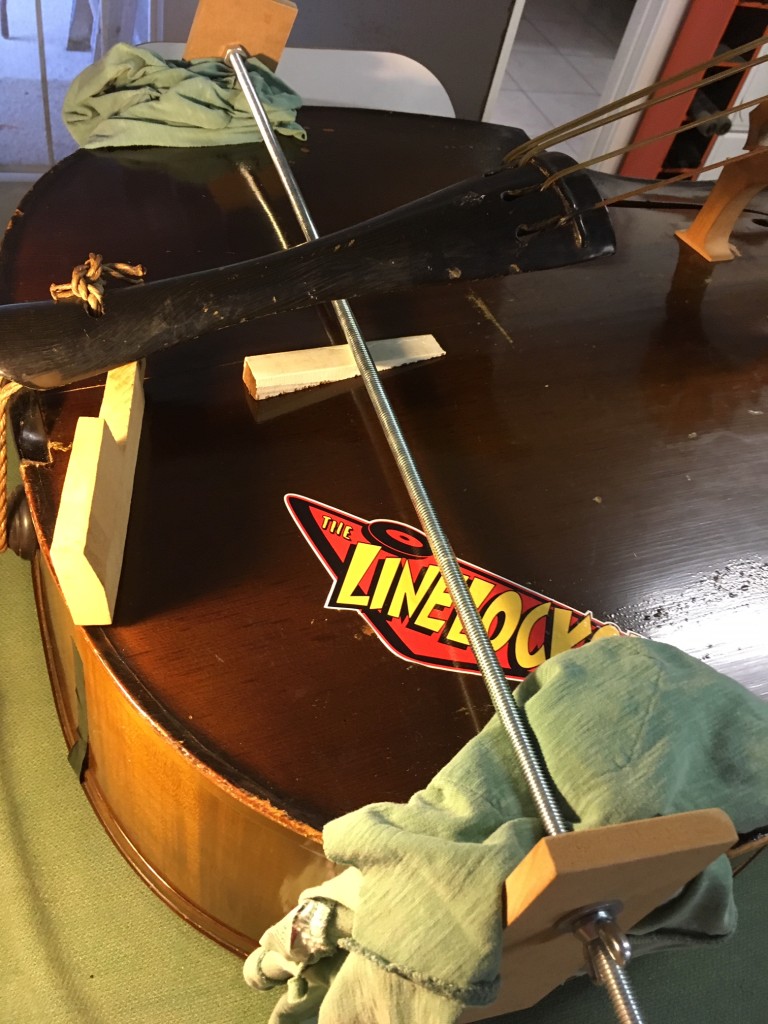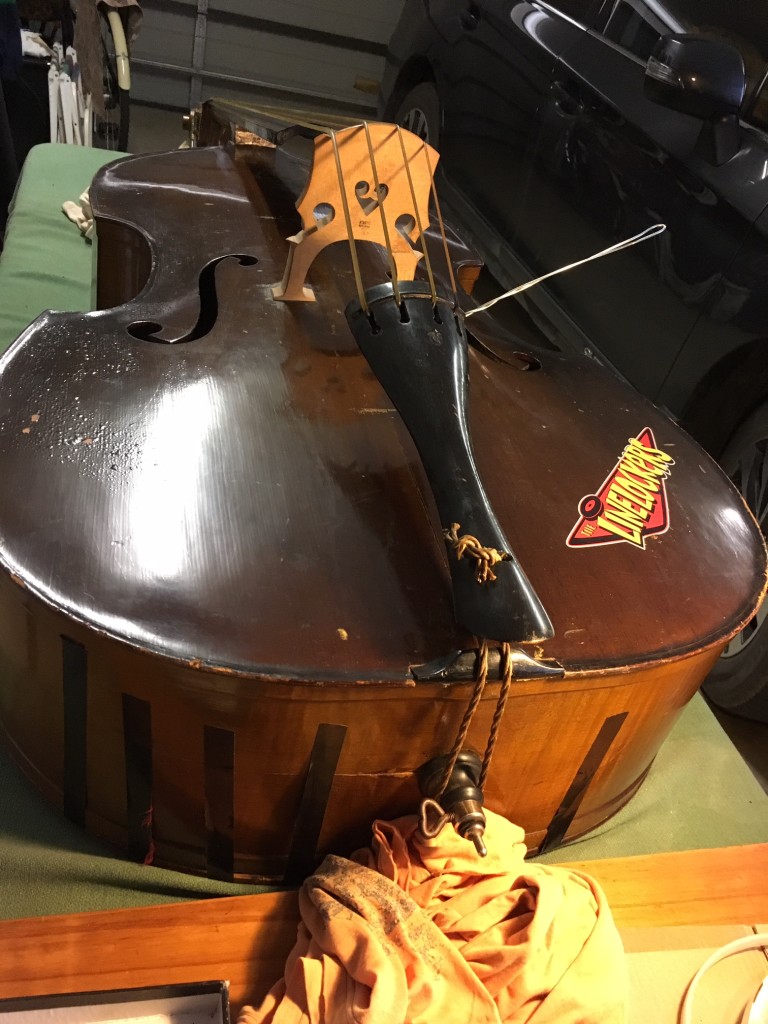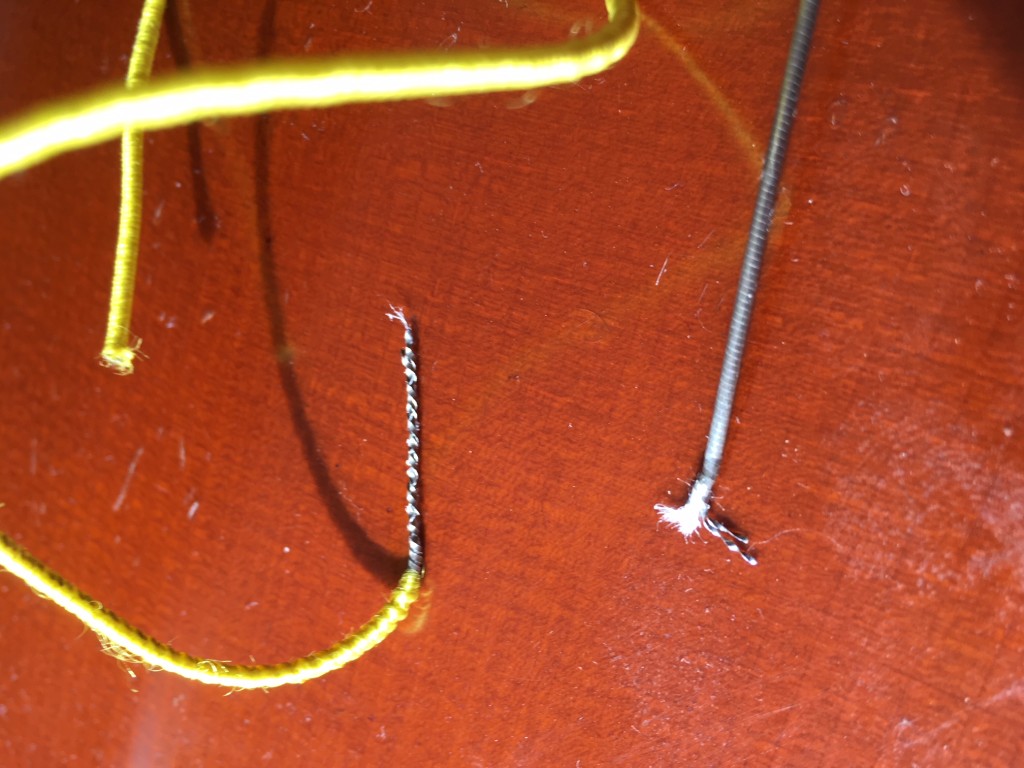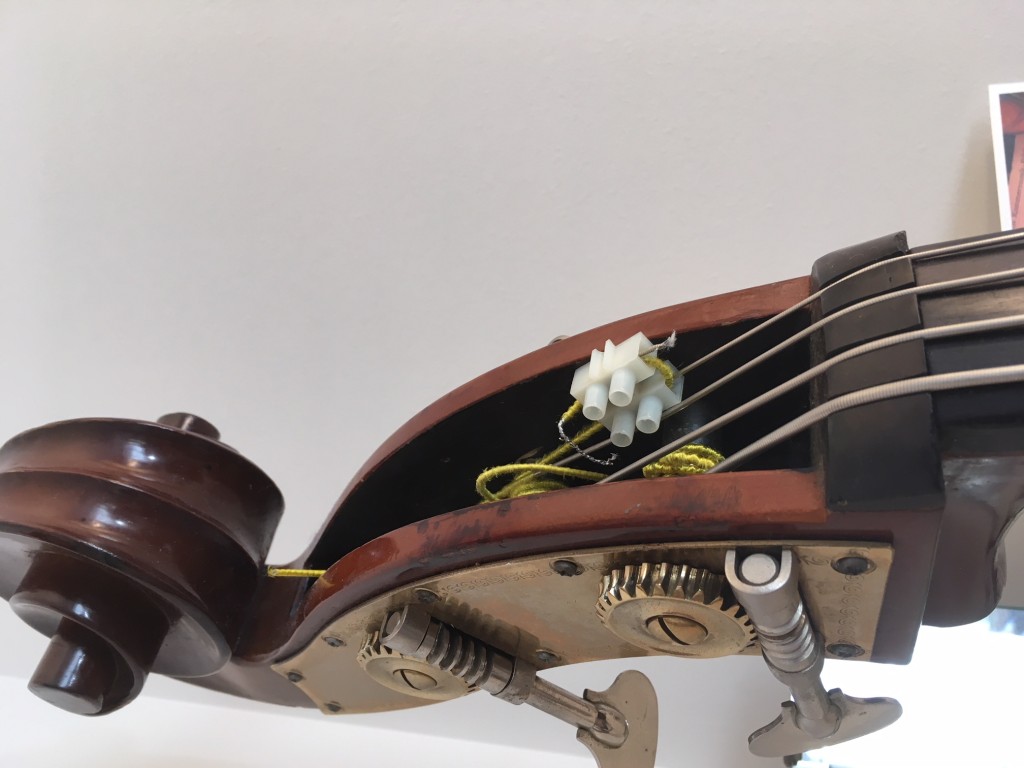Now on to the peg box. This was a perfect time for an upgrade of the tuners. In my experience, single tuning machines make any double bass sound better. With “better” I mean more rich and woody*. I guess this is because the “two-plus-two” tuner combinations (two tuners attached to a heavy brass plate on either side of the peg box) are more rigid, have much more metal, and therefore make the bass sound more rigid and metallic.
(When I changed the tuners on my 170-year-old French Miracourt bass to single “hat peg” tuners, the bass immediately sounded much more sonorous.)
* Hat peg tuners (where the tuning pegs are usually made of ebony instead of brass) will help the bass sound even more woody than single tuners made entirely of brass. Hat peg tuners are, however, quite expensive. Single brass tuners (with brass pegs) are almost as good at half the price.
The photo below shows the peg box with the old tuners removed. The customer already knew that there had been some inaccurate work done on the peg box sometime ago. So we both knew the holes in the peg box would be larger than necessary, but this was going to be only a minor visual blemish. (You’ll see the outcome in the following photos.)
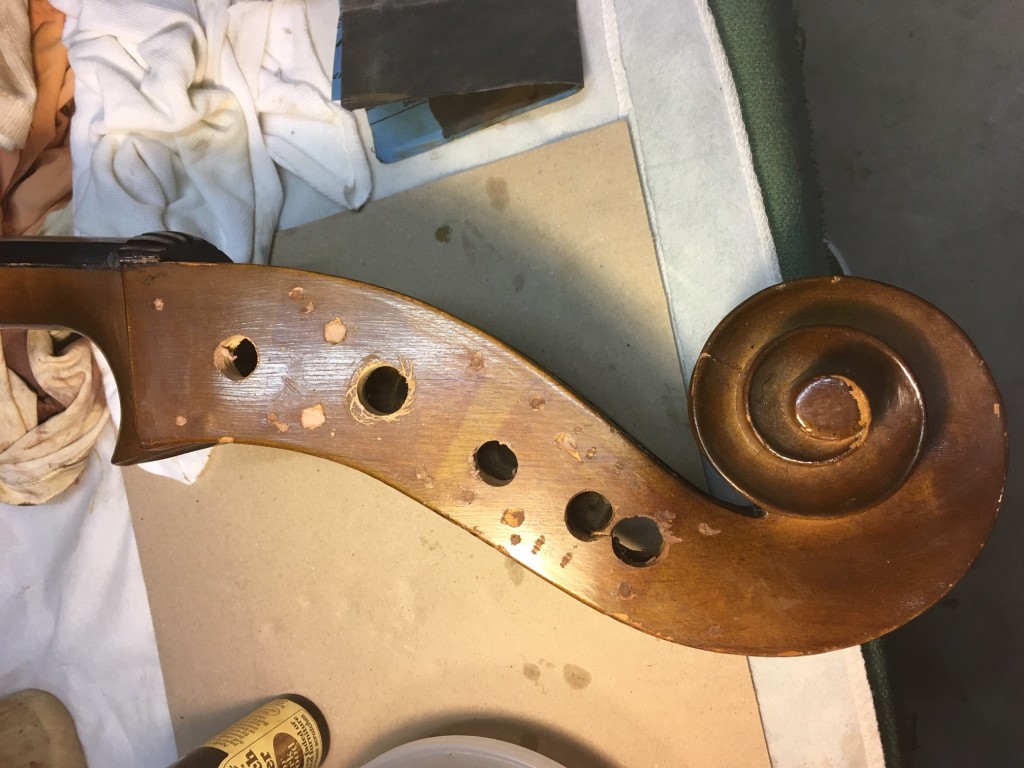
Hofner peg box with tuners removed.
The next photo shows the tuners on the treble side. Some of the old holes and scratch marks have already been treated.
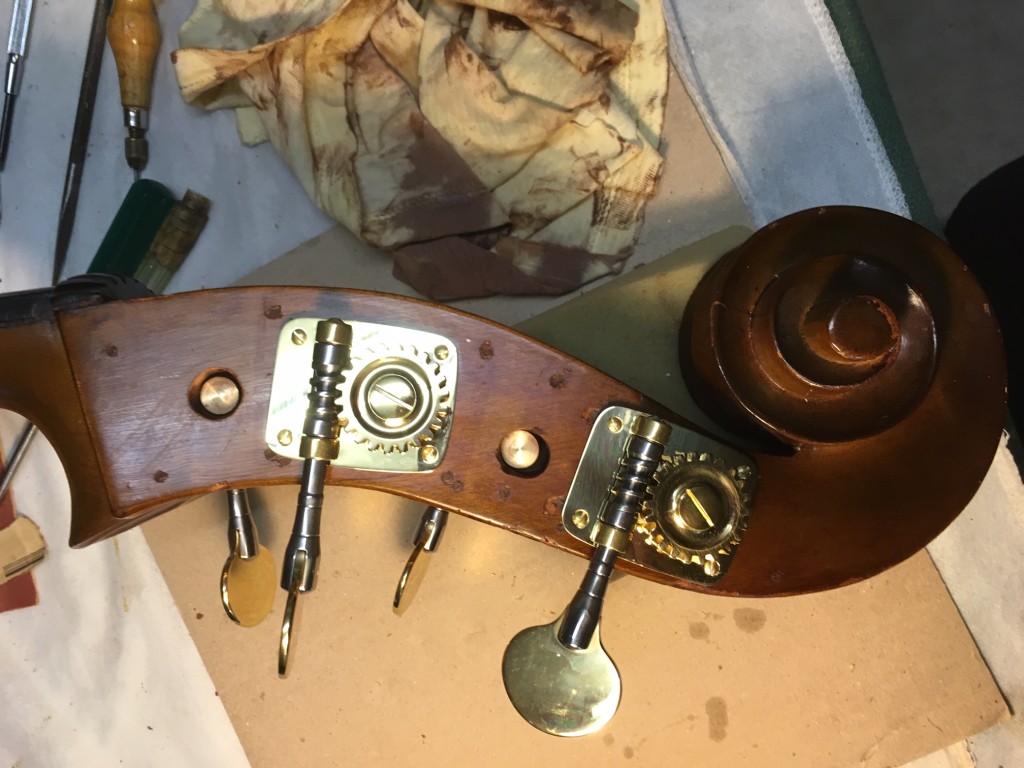
Hofner head treble side
The next photo shows the peg box on the bass side. Here you can see the even larger holes for the pegs (from a previous job.) The pegs move freely, however, because the plates are held in place with four screws each. So, no problem 
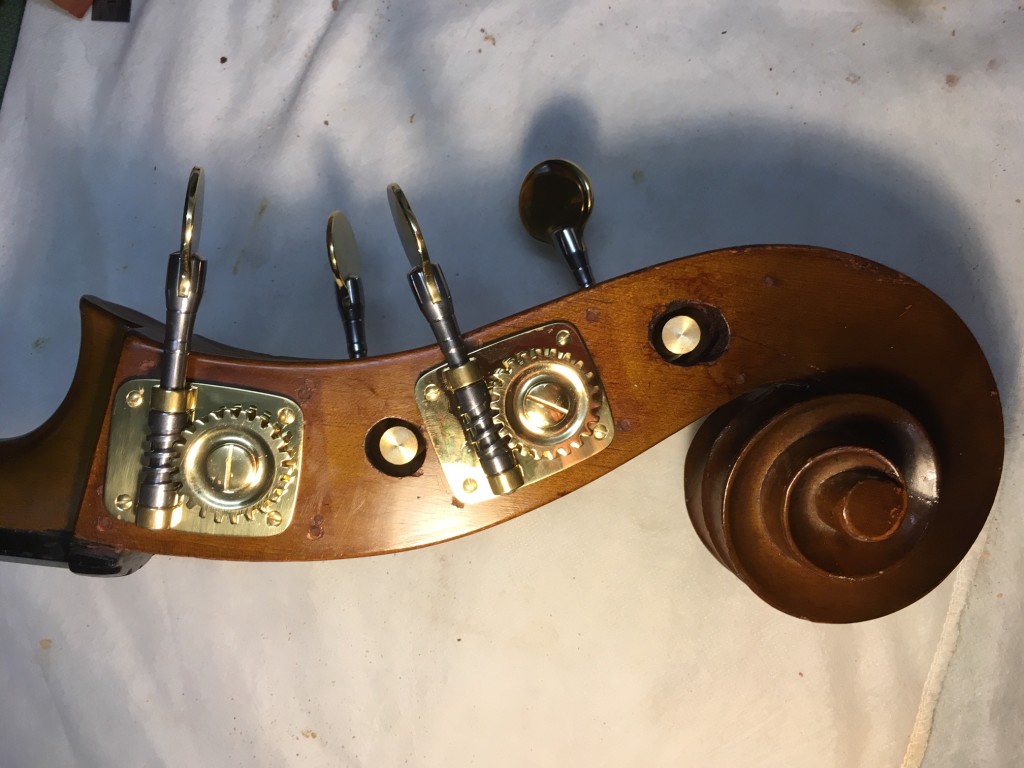
Hofner peg box, bass side
And now the top view of the peg box.
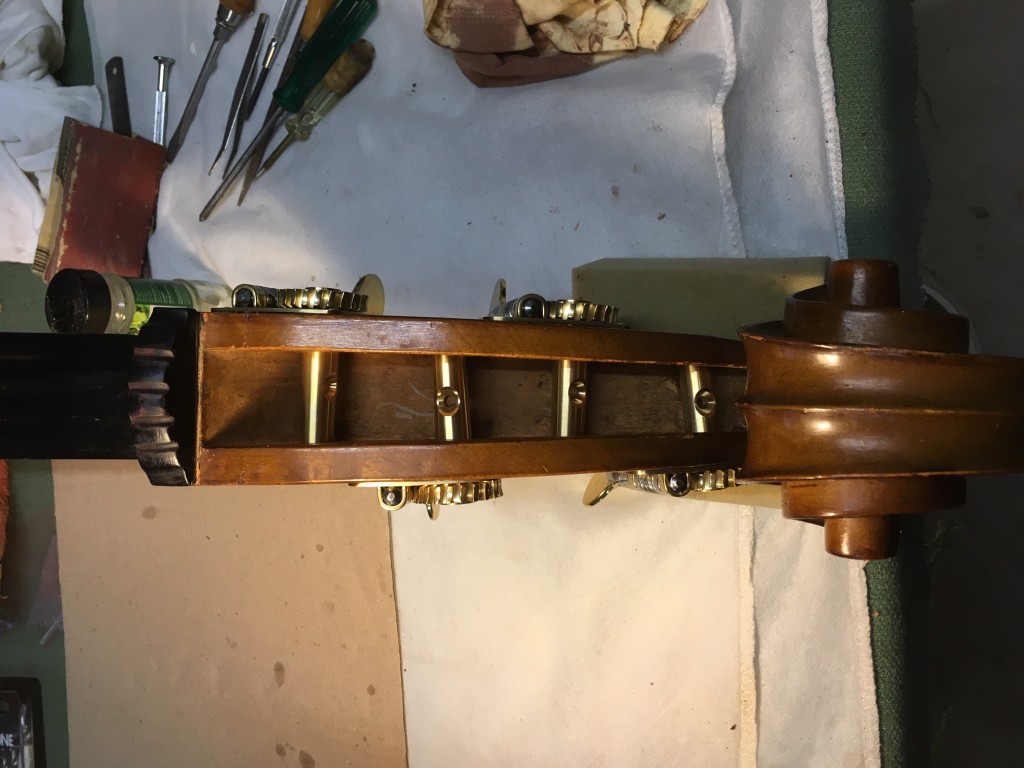
Hofner bass peg box top view
